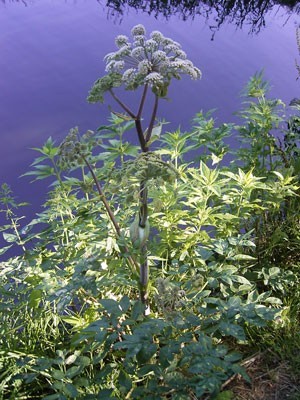
| Botanical Name: | Angelica archangelica |
| Common names: | Garden Angelica |
| Description: | When mature, Angelicas are bold, 2-foot-high plants with bright green leaves and yellowish green flower heads that tower on stems as tall as 6 feet high. |
| Life Cycle: | biennial, although stems that show signs of blooming may be cut off to keep plant growing a third season. |
| Exposure: | partial shade |
| Cultivation: | Prefers moist, fertile, slightly acidic soil. Transplant seedlings when they have 4 to 6 leaves. Angelica prefers cool areas of the garden. Advertisement |
| Propagation: | seeds; self-sowing |
| Parts Used: | leaves, roots, seeds and stems |
| Harvesting and Storage: | The whole herb, if used medicinally, should be collected in June by cutting shortly above the root. If the seeds are used, they should be gathered when ripe and dried. Roots should be dried rapidly and placed in air-tight receptacles and they will retain their medicinal virtues for many years. |
| Medicinal Uses: | Angelica has stimulating properties when used in tea form and can be used to treat digestive upsets such as colic, flatulence and spasms. Angelica should not be used by diabetics or taken in large does while pregnant. Avoid sun exposure immediately after taking. |
| Culinary Uses: | The stems and seeds are used in candy making and for flavoring liqueurs. The dried leaves are used in the preparation of hop bitters. Fresh leaves can be chopped and used in salads or other dishes and can be added to sour fruits to neutralize acidity. |
| Other Uses: | tall border, garden focal point, and potpourri |
| Notes: | This herb is not related to Angelica pachycarpa, which is purely ornamental and has no medicinal or culinary value. |